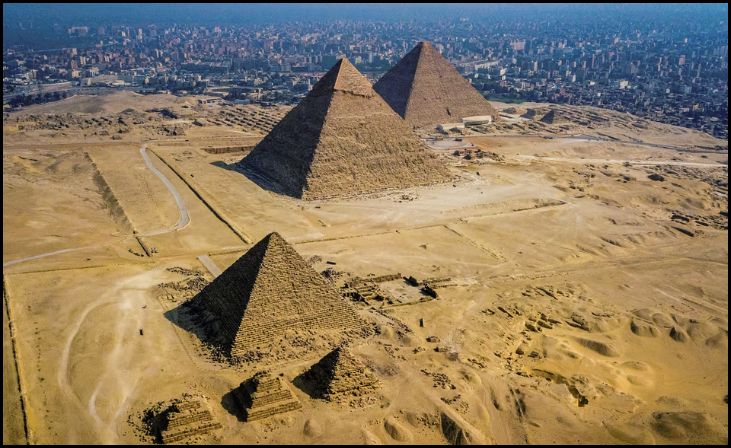Archaeologists and scientists have made a groundbreaking discovery that could potentially unravel one of ancient Egypt’s most enduring mysteries. This discovery, which sheds new light on the construction of the pyramids, particularly the iconic Giza complex, has the potential to reshape our understanding of ancient engineering and civilization.
The Discovery

Researchers at the University of North Carolina Wilmington have uncovered a long-lost branch of the River Nile, a hidden waterway buried beneath desert sands and farmland for thousands of years. This discovery is believed to hold the key to understanding how massive stone blocks and materials were transported for the construction of the pyramids over 4,000 years ago.
The Methodology
Led by Professor Eman Ghoneim, the research team utilized a combination of cutting-edge technologies and analysis techniques to unveil this ancient waterway. Radar satellite imagery, historical maps, geophysical surveys, and sediment analysis were employed to map the Ahramat branch of the Nile, named after the Arabic word for pyramids.
The Significance
The discovery, published in Nature Communications Earth & Environment, provides compelling evidence that the Nile branch played a pivotal role in the construction of numerous pyramids, including those at Giza and Lisht. This river served as a crucial transportation route, facilitating the movement of heavy stone blocks and construction materials during the pyramid-building era.
Implications for Ancient Engineering

Dr. Suzanne Onstine, a co-author of the study, emphasized the significance of this finding in understanding ancient engineering practices. The utilization of the river’s energy for transportation significantly reduced the reliance on human labor, offering new insights into the ingenuity and capabilities of ancient Egyptian civilization.
Historical Context
The discovery underscores the historical importance of the Nile River as a lifeline for ancient Egyptians. It highlights how environmental changes, such as droughts and sandstorms, have shaped human societies over millennia. The presence of this long-lost waterway offers a glimpse into the resourcefulness and adaptability of ancient civilizations.

